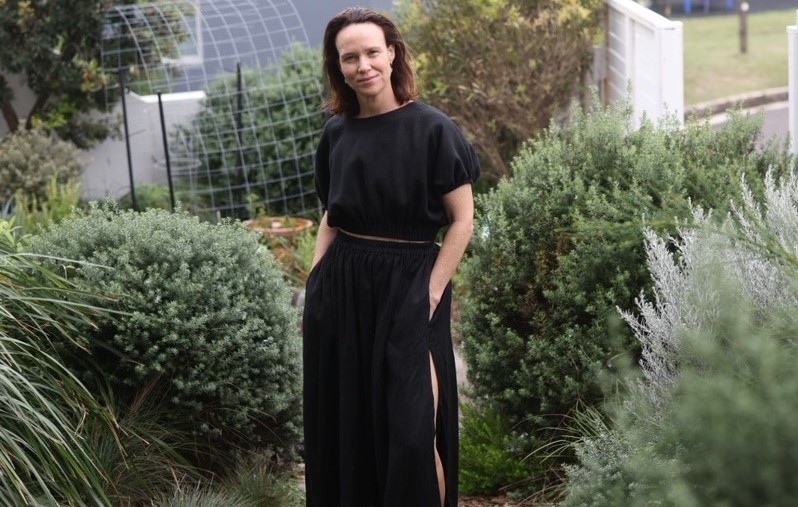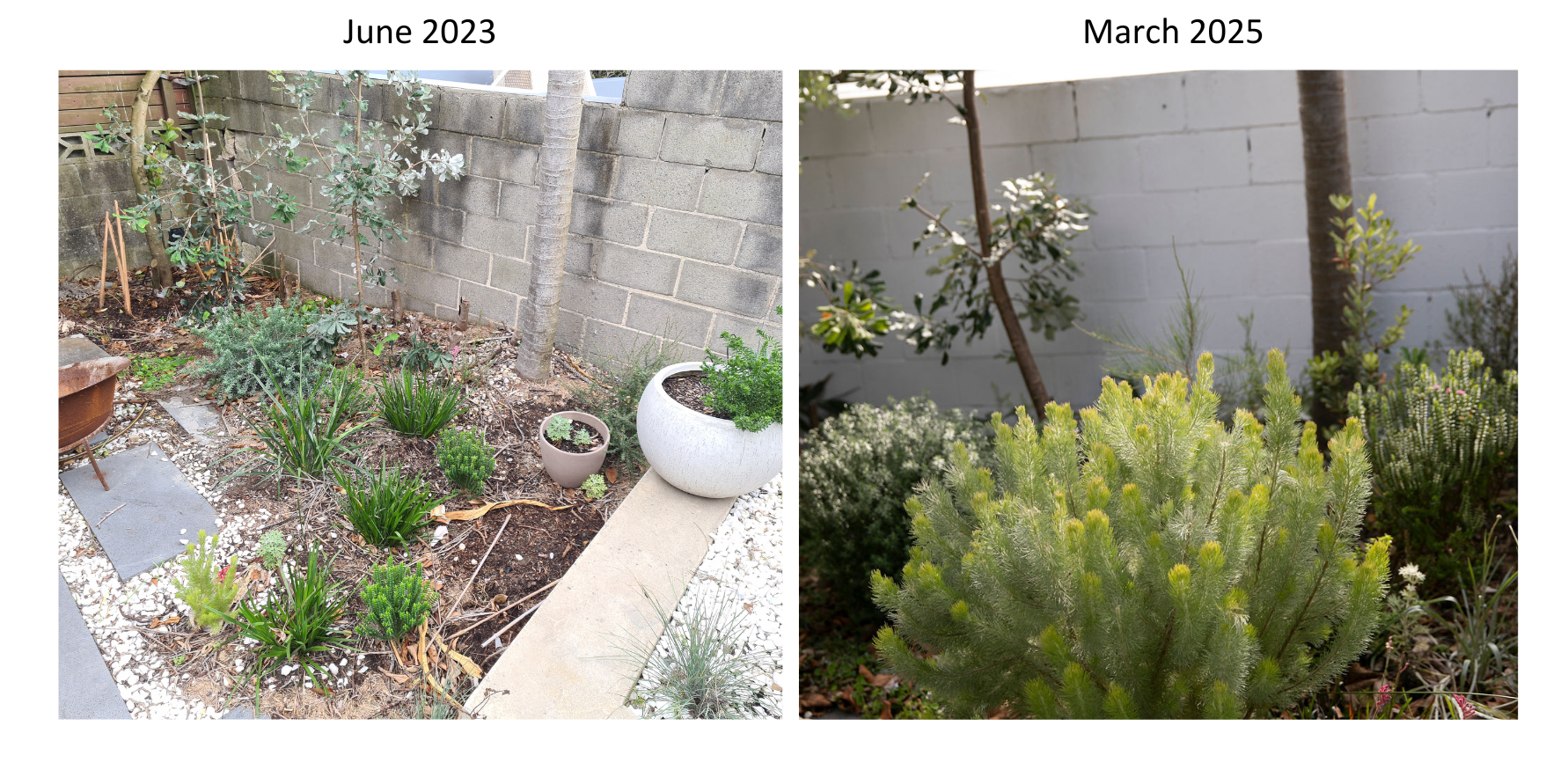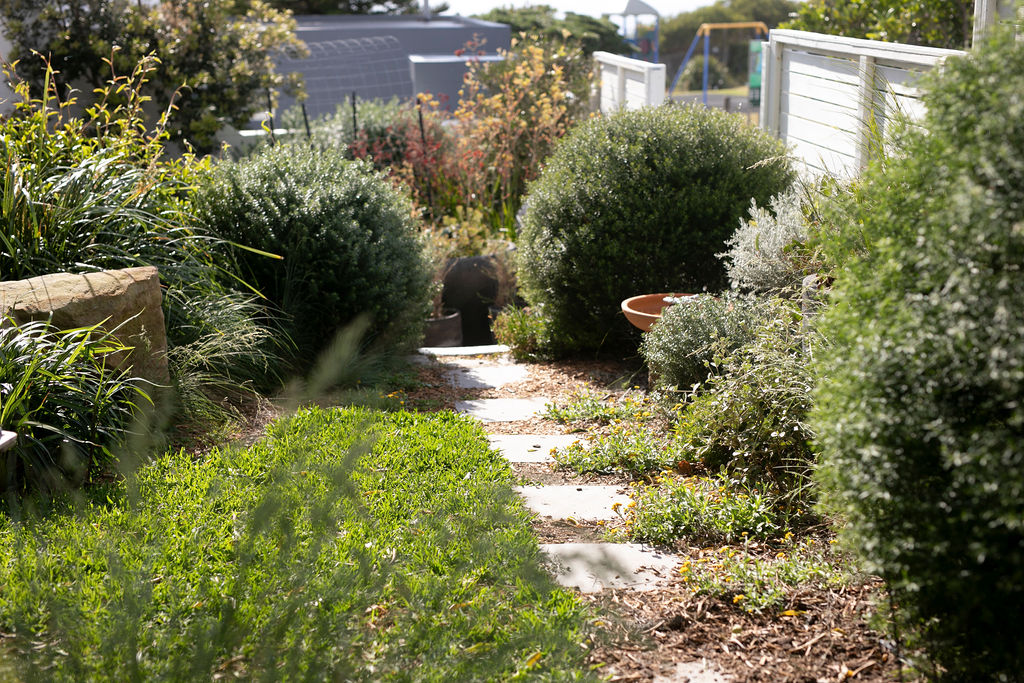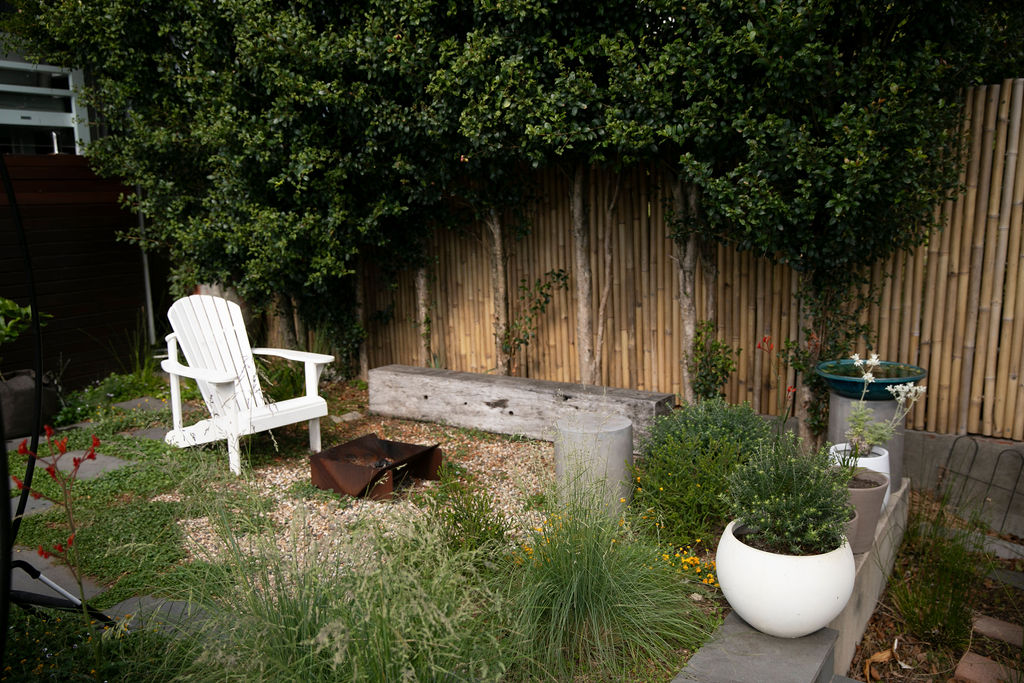Dover Heights resident Megan, started her native garden as a covid lockdown project and in early 2023 joined Council’s Living Connection habitat gardening program to get further advice on creating a garden that would support wildlife. Several years on Megan has well and truly been bitten by the gardening bug (possible as she uses no pesticides!) and shares with us how her garden is developing and what's next…..
What did you set out to achieve with your garden?
When I first started working on my garden, my main goal was to remove an ugly overgrown viburnum hedge that had been blocking all the natural light and had killed everything underneath and around it. The initial goal was to create a brighter, more inviting space for both the garden and our home. However, as I began researching replacement plants, I quickly became fascinated by the idea of incorporating local native plants.
 Has your idea for your garden changed over time?
Has your idea for your garden changed over time?
What started as a simple landscaping project, to visually transform the space evolved into a deeper interest in native plants and how they could not only enhance the aesthetics of my garden but also support local wildlife and promote sustainability.
As I learned more about native plants and sustainable gardening practices, my vision expanded and I began to see my garden not just as a personal space, but as a vital part of the local ecosystem. The more I researched, the more I understood the importance of planting not only native, but endemic species to support and create habitat for local wildlife and pollinators. By far, the plants species that have thrived with minimal water and maintenance needed are the ones suited to our local climate. This shift in focus has been incredibly rewarding, as I’m not only enhancing the beauty of my garden but also contributing to the health of the local environment.
Sustainability has become a core principle of my gardening practice. From water-saving techniques to composting and using organic methods for pest control, I’ve become more mindful of how my garden can have a positive impact on the broader community. I am a creative person and design is very important to me, so it’s been an amazing learning experience to create a garden that balances aesthetics with sustainability, and habitat creation.
What have you learnt by which plants thrive and which do not?
I have learnt so much about how plants respond to the local conditions. In the past I would never have considered myself as having a “green thumb”. Now I realise, it’s more about right plant right place! In my garden the strong coastal wind is a major challenge, and only hardy coastal native plants like any variety of Westringia (coastal rosemary), Correa alba, and Banksia integrifolia, Banksia ericifolia, Hibbertia scandens, Lomandra longifolia, Carpobrotus glaucescens (Pig Face) , Anigozanthos (kangaroo paws, not native to this area, but the birds and pollinators love them) and my favourite, Actinotus helianthi (flannel flowers) do well in the exposed areas, especially out on my verge. Other plants that do well with a little more protection are Kunzea, Heath Myrtles, Ozothamnus diosmifolius (rice flowers).
Soil quality varies across my garden, with some areas having poor drainage due to retaining walls. Plants that have done well in these spots include matt rush and wattles, which tolerate more compacted, boggy or clay-like soil. In better-draining areas, a mixed variety of native grasses, and other species have flourished.
There are so many beautiful Australian natives on the market, initially I really wanted a wildflower type garden (I blame Instagram for this ha ha), so initially a lot of the plants I planted were from WA. But I have now learnt to save myself the heartache of trying to grow something that fails to thrive and looks unhealthy and ‘leggy’, because it’s not really meant for my area. It has meant my garden is very green overall, but I have created interest with texture, height and different shades of green.
 What have you notice about yourself and or your family as a result of your thriving garden?
What have you notice about yourself and or your family as a result of your thriving garden?
My garden has had a noticeable impact on both my personal well-being and that of my family. Spending time outdoors, whether gardening or simply enjoying the space, has become a great way to unwind and disconnect from the stresses of daily life. I have slowly removed all our lawn (we only have a tiny patch left at the front, which is soon going), so our backyard in particular feels like a mini forest. When we sit out there at night around the fire pit, it actually feels like we are in the bush! I’ve noticed that I’m more physically active in terms of incidental activity. I can’t help but stop and pull out little weeds every time I walk past, it has also made me more aware of the change in seasons and a deeper connection with the natural world.
For my family, the garden has become a shared space for relaxation and connection. We spend more time outside, whether it’s for gardening, enjoying meals in the fresh air, or just watching the wildlife it attracts. The garden has definitely helped foster a sense of calm and mindfulness.
Additionally, the satisfaction of seeing the garden flourish, knowing that the plants are not only enhancing the space but also benefiting the local environment, has brought a sense of accomplishment and purpose. I get so excited when I spot a new bird or even an insect. My family does think I am a little crazy, but I know I am influencing them positively! It’s also sparked a deeper appreciation for nature and sustainability, which has made its way into other areas of our lives, like reducing waste or making more eco-friendly choices. It has also sparked a career change in me as I have now moved into Landscape Design!
Can you tell us about what changes you have noticed since your plants have matured more?
Before I ripped out the viburnum hedges, the only wildlife we ever had were Common (Indian) mynas. We had so many they were a pest and often used to fly into our house and leave a mess! This has slowly changed in the last couple of years as the garden has grown. Now, the Common mynas don’t dare come onto our property as we have wattle birds, crows, kookaburras and just recently the smaller birds are moving in as the native plants are thickening. We currently have a pair of willy wag tails occupying a corner at the front! I am still desperate for some Superb Fairy wrens, but I suspect the garden needs to mature more for them to feel safe.
The insect population has exploded, so many bees, native wasps, dragon flies, crickets, ladybugs, moths, butterflies (I saw a huge one the other day but it flew off before I could identify it). Originally, we just had lots of small skinks but now we have some massive ones. I saw a blue tongue once, but haven’t been lucky enough to spot him again. A few neighbours have cats, so I do worry about them being in our garden ☹
 How do you suggest others embark on a native habitat garden?
How do you suggest others embark on a native habitat garden?
If you’re interested in creating a native habitat garden, I’d highly recommend joining groups like Waverley Council’s Living Connections program. Council provides great resources and support for anyone wanting to learn more about native plants and how to create sustainable, wildlife-friendly gardens. It's a fantastic way to connect with like-minded people and get advice tailored to your local area.
If you are thinking of engaging a landscape gardener, there are a few key things to consider. First, ask them if they are familiar with local native plants, particularly those suited to our region (such as Eastern Suburbs Banksia Scrub community of plants, you can check the Waverley Habitat Guide for a list of suitable species). Understanding how to choose plants that are not only beautiful but also support local wildlife is essential. You can also ask if they know how to plant for local pollinators, birds, and other native animals, as this will ensure your garden thrives as a true habitat. Additionally, it’s helpful to discuss your garden’s specific needs—whether it’s poor drainage, windy conditions, or shade—so the landscaper can recommend plants and design solutions that are suited to your space. A landscaper who understands the local environment will be better equipped to help you create a garden that’s both sustainable and low-maintenance.

What’s next for your garden?
Looking ahead, I’m excited to continue evolve and maximise my garden into a more sustainable and wildlife-friendly space.
As the garden matures, I’m working on creating more layers by adding taller trees, shrubs, and ground covers to offer shelter and food at different levels. This will help attract a broader range of wildlife, while also providing structure and variety to the garden’s design.
I’m also looking to remove the last of the lawn area and replacing with habitat-friendly ground covers, as lawns don’t provide much value to wildlife or the local ecosystem. Dichondra repens is so soft and lovely to walk on, it also means no mowing!
Removing weeds and invasive plants will continue to be a priority. I’m forever amazed how even now they keep coming back! These species compete with native plants and harm local biodiversity, so gradually removing them is essential for the health of my garden. It’s all part of the process of nurturing a balanced, thriving environment.
There’s always more to learn, but I’m excited to see how my garden continues to evolve as a habitat for local wildlife. I would love to use my garden as an example of what can be achieved whatever your budget. Eventually I would like to open my garden up to the public and run workshops on how to create a more self-sustaining garden that not only looks beautiful but supports the local ecosystem in a meaningful way.
Further reading
Join Waverley’s Living Connections Program
Waverley’s Habitat Gardening Guide
Weed scan app to identify weeds

